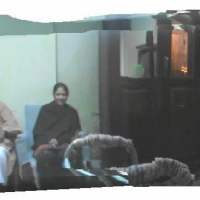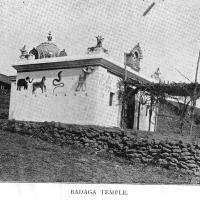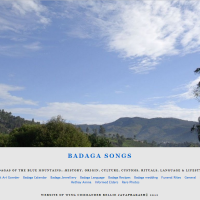 In an effort to give the exact and correct names of hattis/villages under each of the four SEEMAYS, given below is the list of all hattis under the four Seemays.
In an effort to give the exact and correct names of hattis/villages under each of the four SEEMAYS, given below is the list of all hattis under the four Seemays.
The names are given, to the extent possible, as pronounced by Badagas and not as ‘badly twisted’ by others. Like – the original name of Eethoray being called Elithorai.
There may be some omissions/additions/corrections required.
I would request all friends to verify and vet the list and send corrections to bjaypee@gmail.com or add them as comments to this post – LEAVE A REPLY box given at the bottom.
We may separate the hattis as per Badagas, Odeyas and Thorayyas and group them under ‘OORU’ [a group of hattis form an ooru and many oorus constitute a seemay]. At present the focus is on hattis of Badagas [Gowdas] who can marry Badagas from other seemays.
Now, marriages between Gowdas with Haaruvas, Lingaites, Kanakkas etc sects from different seemays [ in some cases, within the seemay] are common. In my opinion, it is high time, we had only three broad groups among Badagas. Namely, Gowdas[including the other sects mentioned above], Odeyas and Thoraiyas and in the distant future, just BADAGAS.
Please note that some hattis like HOSAHATTI appear to be repeated but there may be more than one HOSA Hatti in a seemay.
Please also see the page on HATTIS for more and exhaustive info.
1.’Thodha Naadu Seemay ‘  (Supposed to be our “Dodda Ooru”. Also known as ‘Raja Padagiri Seemae’. The boundaries are from Solur to Kookkal Thore. The names given as known and pronounced by Badagas)
(Supposed to be our “Dodda Ooru”. Also known as ‘Raja Padagiri Seemae’. The boundaries are from Solur to Kookkal Thore. The names given as known and pronounced by Badagas)
Oorus under Thodhanaadu Seemay : Thooday Gui, Kadanaadu, Ebbanaadu, Solur, Kagguchi, Honnadhalai, Kookkal, Poosay Coonoor, Thrichigadi [??}, Solur Kokkal [??]- these appear to be Kotha settlements.
Ajjoor
Akoni
Alattane
Asoganthorai
Athi kallu
Bana hatti
Bara mannu
Baralatti
Batta kore
Bekkodu
Bendatti
Beragallu
Bikkatti
Bikke Kandi
Bikke mora hatti
Billi kambai
Dhavane
Ebbunaadu
Edu hatti
Haalatti
Hanni Kore
Honnadale
Hosa hatti
Hosa hatti [Repeat? – or are there more than one Hosahatti?]
Hullathi
Jakkalorai
Jeenatti
Kada Naadu
Kada sole
Kagguchi
Kalingana hatti
Kallatti
Kambatti
Kappachi
Kara pillu
Karakkallu
Kavaratti
Kavilorai
Kei Kau hatti
Kendore
Kengal
Kengamudi [Kenguvamudi?]
Kodhu mudi
Kokkulu
Konagatti
Kookal Thore
Kookal
Kundha Chappai
Kurumbedi
Kuruthu kuli
Madithore
Malli gore
Mara kallu
Masickal
Mavu kallu
Mel Kau hatti
Melatti
Melur
Moragutti
Moregallu
Motha kambe
Muguttuva
Mynale
Nadu hatti
Nanjanaadu
Nelli Mandu
Ode hatti
Omeyaratti
Ooru malai
Panju mora
Poose kunnur
Seegola
Soluru [Sholur]
Thalai male
Thambatti
Thatha benu
Thatneri
Thattaneri
Thegili
Thooneri
Thore hatti
Thummanada
Thummanatti
Ullupatti
Uyilatti
————————————-
2.’Porangaadu Seemay’
 Hubbathalai Hatti – Photo by JP
Hubbathalai Hatti – Photo by JP
“Porangaadu Seemay”
Ane ode
Arakkambe
Aravenu
Are hatti
Attave
Avvur
Bagumudi
Baiyangi
Bamudi
Bandime
Bangalada
Banni ooru
Batta Kore
Bearatti
Bebbenu
Bellada
Bendatti
Beraganni
Betlada
Bettatti
Bettatti (repeat?)
Bikkatti
Bikkatti
Denadu
Dhabba kambe
Dhimbatti
Dhodda mane hatti
Edukkore
Eethore
Eruppu kallu
Gundada
Hakkeru
Hayoor [Ali Ooru]
Heriasigay,
Honnore
Hora sole
Hosahatti,
Hosatti (repeat?)
Hubbathale Hatti
Hubbathale Ooru
Hullathatti
Imbi mora hatti
Jakka kombe
Jakkada
Jakkalode
Jakkanare
Kada kodu
Kade kambatti
Kagakkuthore
Kakakore
Kakkul
Kallada
Kallatti
Kanneri
Kanneri mookku
Kappatti
Kari mora
Kathigatti
Katta bettu
Kavilore
Kei Odenu
Kengare
Ker bettu
Ker kambe
Keraiyada
Kerbennu
Kesalada
Ketchigatti
Kil Ane hatti
Kil Bikkatti
Kinnakore,
Kodamale
Konavakore
Koon sole
Kottanalli
Kottuvana hatti
kunni hatti
Kurukkathi
Lilli hatti
Malliore
Manjidha
Marle Kambe
Meedenu
Mel Ane hatti
Mel Bikkatti
Mel Odenu
Melur,
Mudia kambe
Nadu hatti
Nara giri
Natta kallu
Neduguva
Odanatti
Odeyaru hatti
Onnatti (Honnatti?)
Pedduva
Pudiyangi
Pudu mandu
Sakkatha
Samil Dittu
Selakkore
Selakore
Selave
Sippili kambe
Sulli goodu
Sundatti
Thalore
Thantha Naadu
Thinni ooru
Thogalatti
Thooneri
Thotha mokke
Thumbi male
Thumbooru
Ummattipadige
Yeda palli
Yettakallu [?]
————————————-
3.’Mekku Naadu Seemay’
‘Mekku Naadu Seemay‘
Also known as ‘Asala Bisalagiri Seemay’
Please also see the page on HATTIS for more and exhaustive info

Porere – photo by JP
Aadakore (Thulidale)
Achanakal
Adikaratti
Ane hatti
Angidi hatti
Are hatti
Attu Bayilu
Balakore
Belitho
Bellada
Bembatti
Bengal Matta
Bikol
Bingisa Kallu
Byge mandu
Denadu
Denale
Dhodda Appukodu
Dhoddani
Emakkatti
Godalatti
Haalada
Haallattane
Haraguchi
Hosatti
Hosa Attubayulu
Hulikkal
Hullada
Ithalar
Kallakore
Kammandu
Kanneri
Kariyalbe
Kasole
Kattery
Kekkatti
Ken Kundhe
Kenduva
Ker Kandi
Kerada
Kethore
Ketti Ooru
Kil Hosatti
Kodangatti
Koderi
Kokkalada
Kothi ben
Maasi kandi
Mandhane
Mani hatti
Manja kambe
Meekeru
Mel Hosahatti
Mel Koderi
Melur
Melur Hosatty
Muduguva
Mutti nadu
Mynale
Nadu hatti
Nai hatti
Nunduva
Oor thittu
Oranai
Oranai (Kattery)
Panne bennu
Porore
Porthi
Pudugatti
Sakkalatti
Sogathore
Sora gundu
Thambatti
Thangadu
Theda hatti
Theedatti
Thoodhale
Thooratti
Umar kandi
Yellanalli
Murugesh Halan writes :- ‘Melur Hosahatty is missing. I want to know to if Haruvas and Badagas of Mekkunadu are in brotherly relation. If yes, how are they different?’Melur Hosahatty added. As far as Haruvas and Gowdas are concerned, in the early 1900s, Badaga community got vertically split into two main factions called Haruva Katchi and Kotha Katchi. One faction was lead by Hubbathalai and the other by Thangaadu. Those days, funeral expenses were borne by the family of the deceased and NOT by the entire hatti, as prevalent today. Kotha musicians had to be compulsorily called. Since, the funeral ceremonies extended even upto a week, till the ‘KORAMBU kaibathu’, the expenses involved were enormous as the guests from all over the ‘Naakku Betta’ had to be fed and ‘feasted’. Many families of the deceased had to sell their property. Realising that a death in a family is driving it to untold misery, Hubbathalai Bellie Gowder and his son Ari Gowder, who were given the title Rao Bahadur later, brought in the revolutionary reform by which the expenses of the funeral were met by the entire village by means of a ‘tax’ called ‘saavu vari’ and inviting the Kotha Musicians was donw away with. But the leaders of Thangaadu and other mainly ‘Haaruva’ hattis opposed this move. Marriages between these groups stopped.
Fortunately, this difference has gone away. Now, marriages between Haaruvas and Gowdas, as well as Lingaites and Gowdas sects from different seemays [ in some cases, within the seemay] is common. There have been matrimonial relationships established even between Hubbathalai and Thangaadu. In my opinion, it is high time, we had only three broad groups among Badagas. Namely, Gowdas, Odeyas and Thoraiyas and in the distant future, just BADAGAS. – Wg Cdr JP
————————————-
4.’Kundhay [Naadu] Seemay’

Kerappaadu – Photo by JP
Please also see the page on HATTIS for more and exhaustive info
Attu Mannu
Baigada
Baakore
Bikkatti
Edakkaadu Nadu hatti
Edakkaadu Thale hatti
Emarald
Gai kandi
Gundinaali
Hosa hatti
Kandibikke
Kariamale
Kechigatti
Kei Kundhe
Kerappadu
Kombukorai
Kora Kundhe
Kunjanare
Mani Kallu
Manjooru
Matta Kandi
Mel Kundhe
Mukki Male
Mullegooru
Mulli Male
Nadu hatti
Sundatti
Thooneri
Thorajada

 He was a original researcher of Badaga history and took much pains to put down his findings, thoughts and views on record. He was an authority on several Badaga matters and took active part in promoting and preserving Badaga tradition.
He was a original researcher of Badaga history and took much pains to put down his findings, thoughts and views on record. He was an authority on several Badaga matters and took active part in promoting and preserving Badaga tradition.




 Naakku Betta – pix by JP
Naakku Betta – pix by JP















 Mookuthi
Mookuthi  Chinna
Chinna 






 ==
==



![Seemae [See'may] & Morae [Mo'ray] (relationship)](https://i0.wp.com/badaga.wordpress.com/files/2008/11/nakku-betta1.jpg?resize=200%2C200)








































